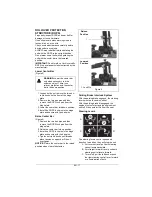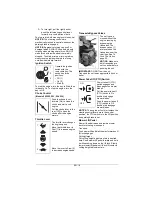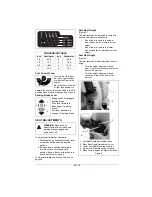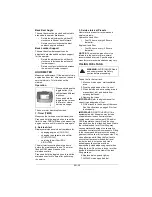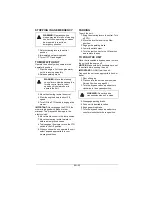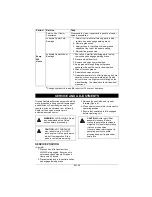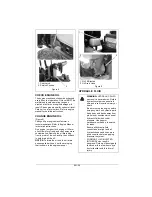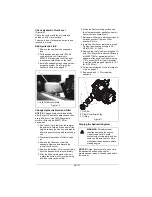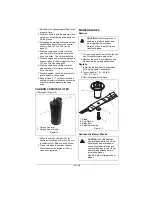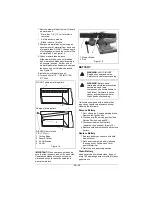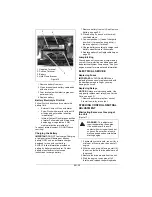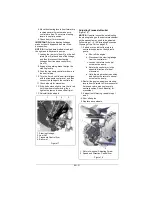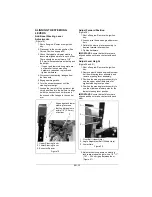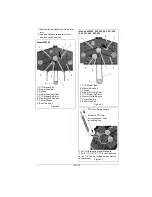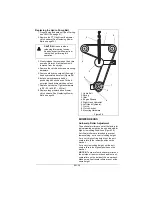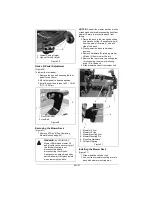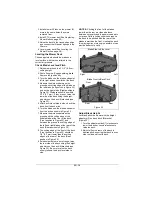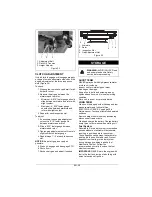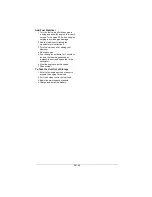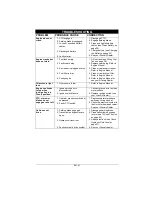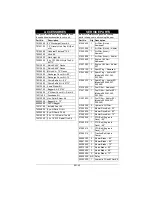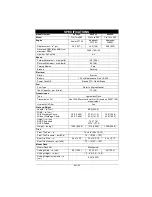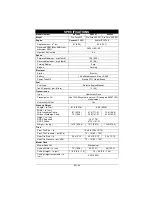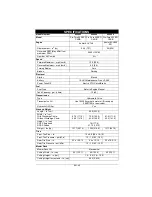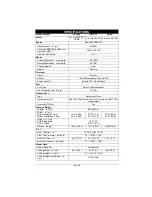
EN - 31
5. Move the steering levers from forward to
reverse several times to make sure
controls are free. Then return steering
levers to neutral position.
6. Check hub(s) for movement.
IMPORTANT:
Before adjusting linkages,
make sure both bypass valves are in the
drive position.
NOTICE:
Use the same methods to adjust
the right and left hydraulic pumps.
7. Loosen the jam nuts (item 2) on the ball
joints (item 4) at each end of the linkage,
and then disconnect the steering
linkages from transaxle control arm
(item 3).
8. Engage the parking brake to align the
steering levers.
9. Push the transaxle control arm down to
the neutral stop.
10. Turn the tie rod until the ball joint aligns
with the transaxle control arm, and then
connect the linkage to the control arm.
11. Check wheels for movement.
12. If the hubs move slightly, turn the tie rod
until the wheel stops moving, then
tighten the jam nuts on each ball joint.
13. Reinstall drive wheels.
Adjusting Transaxle Neutral
NOTICE:
If neutral cannot be set adjusting
the steering linkages, the neutral mechanism
on the transaxle may need to be adjusted.
Follow steps 1 – 6 in
1. If a hub moves, adjust the return to
neutral mechanism on the hydraulic
pump:
a. Shut off the engine.
b. Disconnect the steering linkage
from the control arm.
c. Loosen the return to neutral
screw on the pump.
d. Rotate the control arm in the
opposite direction of wheel
movement.
e. Hold the stop bracket in position
and tighten the return to neutral
screw on the pump.
2. Restart the engine and move steering
levers from Forward to Reverse several
times and return steering levers to
neutral position. Check wheel(s) for
movement.
3. If wheel is still moving, repeat steps 1
4. Shut off engine.
5. Replace drive wheels.
Figure 17
1. Steering Linkage
2. Jam Nut
3. Transaxle Control Arm
4. Ball Joint
Figure 18
1. Return-to-neutral Adjusting Screw
2. Speed and Direction Control Arm

